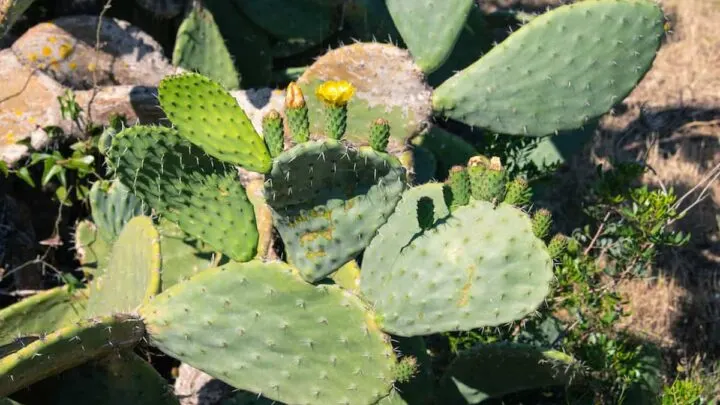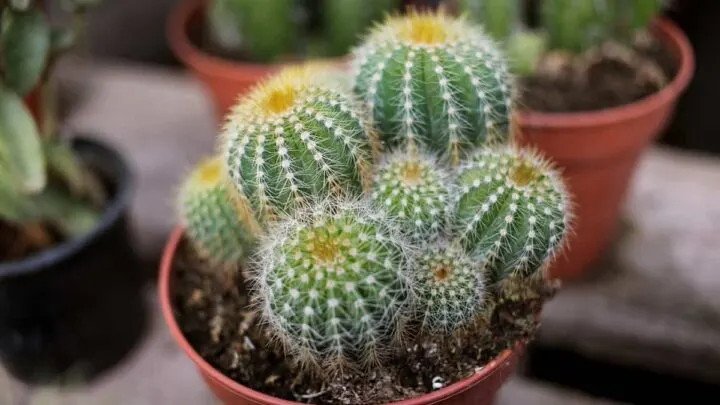Cactus plants are unique in the way they maintain themselves and grow. These plants even have the ability to make their own food too; an important part of their survival. It’s a special process and something any gardener can appreciate. So, how do cactus plants make food?
Cactus makes its own food through photosynthesis. By converting sunlight, carbon dioxide, and water into glucose, cactus plants can then feed on that glucose for food.
Even though plants do not eat and drink the same way animals do, this does not mean they do not need water and nutrients to survive. Plants get nutrients and water from the soil around them, but they also need to undergo the process of photosynthesis to make the food they need to grow and thrive.
Here we will explain everything you need to know about how cacti make their food.

What Is Photosynthesis?
Photosynthesis turns sunlight, carbon dioxide, and water into glucose. The plant then uses this glucose as food that helps the plant grow, reproduce, and stay alive.
During this process, the sunlight is absorbed by chlorophyll in a plant. This chlorophyll is green, and it is responsible for the green pigment that most plants have. Meanwhile, stomata allow carbon dioxide to be absorbed by the plant, and they are responsible for releasing oxygen from plants.
In What Part Of Cacti Does Photosynthesis Occur?
In most plants, the stomata and chlorophyll needed for photosynthesis are located in their leaves. However, in cacti, this is not the case. After all, a cactus does not have leaves in the same way that other plants do.
To get around this, the cactus conducts photosynthesis within its stem. This means that the chlorophyll needed to capture sunlight and the stomata needed to absorb and release gasses are located within the cactus stem.
Do Cactus Have Stomata?
Yes, all cacti have stomata. Stomata are essential for photosynthesis in cacti as they are responsible for absorbing carbon dioxide.
Carbon dioxide is crucial for photosynthesis; a cactus could not make glucose without it. In addition to this, stomata are also responsible for releasing oxygen into the air as well. Oxygen is a by-product of the photosynthesis process.
Why Do Cactus Stomata Open At Night?
Photosynthesis in a cactus is unique because their stomata are in their stems and open at night instead of during the day. Cacti open their stomata at night to conserve water and energy.
Deserts are normally extremely hot during the day, and a cactus opening its stomata could quickly deplete its water stores. As a result of this potential problem, cacti have evolved to open their stomata at night when it is much cooler.

How Do Cacti Get Water?
Like any other plant, cacti absorb groundwater through their roots. However, cacti are unique because their roots tend to be more shallow than other plants. This is advantageous to cacti because shallow roots allow the plant to absorb water easier and more quickly, even when there has been only a small amount of rain.
Once the cactus’ roots have absorbed the water, they are stored within the plant’s thick stem. This reservoir allows the cactus to store water for periods of drought. During these dry spells, the cactus will slowly absorb the water stored in its stem over time, allowing it to thrive even in the most severe of environments.
How Do Cacti Survive In The Desert?
Several unique evolutions have allowed the cactus to survive the harsh conditions of the desert better. Here are some ways cacti have evolved to make food and get enough water to thrive in the desert.
Cacti Don’t Have Leaves
Believe it or not, most plants’ leaves are extremely delicate, and they would not survive the harsh heat or dryness of the desert. As a result, leaves on a cactus would only cause them harm. To eliminate this issue, cacti have evolved to not have leaves and conduct all of their photosynthesis within their stems.
Cacti Undergo Most Of Photosynthesis At Night
Deserts get very hot during the day, and photosynthesis expels much water and energy within plants. As a result, conducting photosynthesis during the day could put a cactus in danger of losing too much water and energy too quickly.
This could cause a cactus to die if the conditions are extreme enough. Luckily, cacti have evolved to undergo most of the photosynthesis process at night when it is much cooler.
Cacti Have Developed A Shallow Root System And A Way To Store Water
It does not often rain in the desert, which would mean bad news for most plants. Cacti have evolved to survive on very little water by having a shallow root system and a place to store extra water within their stems.
A shallow root system allows the cactus to absorb water quickly, even when there is not much rainfall. Meanwhile, a cactus’ water storage space in its stems allows the plant to absorb more water than they need and use it for later.

Things To Consider
There are some additional things that you can consider about how cacti make their food. These other things to consider include whether or not cacti need a lot of sun and how often you should water a cactus. Here are some more things for you to consider regarding how cacti and other plants make their food.
Do Cacti Need A Lot Of Sun?
The answer to this question depends entirely on the specific species of cactus that you are taking care of. Some cacti only thrive when they receive partial sunlight, and they do best in areas that receive full sun for part of the day and shade during other times.
However, other species of cactus thrive in full sunlight all day long. Researching your type of cactus and finding out how much sunlight they need will ensure that you take care of that cactus species as best as possible.
How Often Should You Water Your Cactus?
Since cacti are native to the very dry desert, they do not need to be watered often. It is only recommended that most species of cactus get watered once every couple of weeks. This is great for those who are looking for a plant that is very low maintenance care-wise.

Hi there, my name is Allie and welcome to my blog; GareningWithAllie!
Much of what you see written here is just our personal experiences with gardening. Along with the content I write here, there is also a unique collection of gardening topics covered by some of our close friends. I hope you find everything you read here to be helpful, informative, and something that can make your gardening journey the most lovely experience ever! With that said, Happy Gardening!
